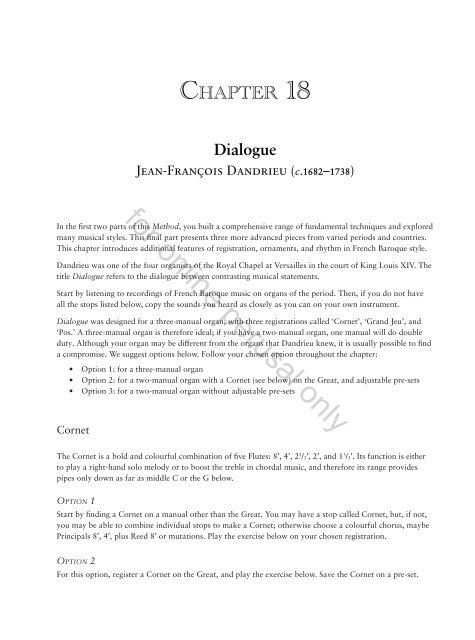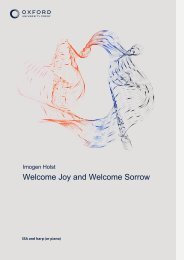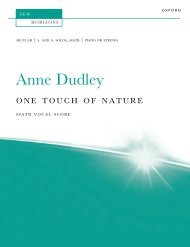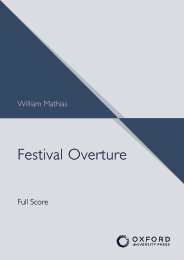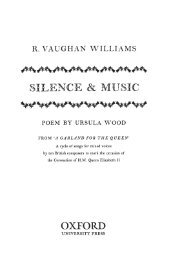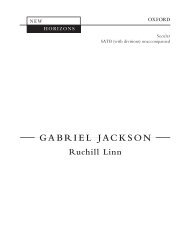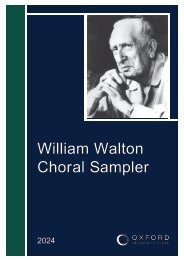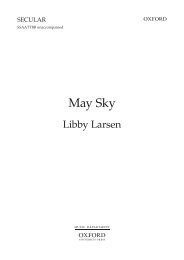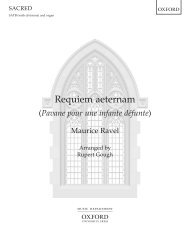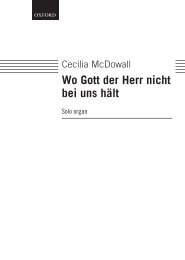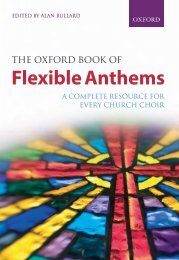New Oxford Organ Method
A single piece of repertoire is the primary focus for each chapter, with preparatory exercises providing the necessary technical work building towards the piece. Each lesson covers four main topics, which are systematically developed: practice methods, registration, fingering and pedalling, and historically-informed interpretation. The method is for keyboard players of any age who are establishing first steps at the organ with or without a teacher. It will also serve more experienced organists who want to improve their technique.
A single piece of repertoire is the primary focus for each chapter, with preparatory exercises providing the necessary technical work building towards the piece. Each lesson covers four main topics, which are systematically developed: practice methods, registration, fingering and pedalling, and historically-informed interpretation. The method is for keyboard players of any age who are establishing first steps at the organ with or without a teacher. It will also serve more experienced organists who want to improve their technique.
- No tags were found...
You also want an ePaper? Increase the reach of your titles
YUMPU automatically turns print PDFs into web optimized ePapers that Google loves.
Chapter 18<br />
Dialogue<br />
Jean-François Dandrieu (c.1682–1738)<br />
for online perusal only<br />
In the first two parts of this <strong>Method</strong>, you built a comprehensive range of fundamental techniques and explored<br />
many musical styles. This final part presents three more advanced pieces from varied periods and countries.<br />
This chapter introduces additional features of registration, ornaments, and rhythm in French Baroque style.<br />
Dandrieu was one of the four organists of the Royal Chapel at Versailles in the court of King Louis XIV. The<br />
title Dialogue refers to the dialogue between contrasting musical statements.<br />
Start by listening to recordings of French Baroque music on organs of the period. Then, if you do not have<br />
all the stops listed below, copy the sounds you heard as closely as you can on your own instrument.<br />
Dialogue was designed for a three-manual organ, with three registrations called ‘Cornet’, ‘Grand Jeu’, and<br />
‘Pos.’ A three-manual organ is therefore ideal; if you have a two-manual organ, one manual will do double<br />
duty. Although your organ may be different from the organs that Dandrieu knew, it is usually possible to find<br />
a compromise. We suggest options below. Follow your chosen option throughout the chapter:<br />
• Option 1: for a three-manual organ<br />
• Option 2: for a two-manual organ with a Cornet (see below) on the Great, and adjustable pre-sets<br />
• Option 3: for a two-manual organ without adjustable pre-sets<br />
Cornet<br />
The Cornet is a bold and colourful combination of five Flutes: 8ʹ, 4ʹ, 2 2 /3ʹ, 2ʹ, and 1 3 /5ʹ. Its function is either<br />
to play a right-hand solo melody or to boost the treble in chordal music, and therefore its range provides<br />
pipes only down as far as middle C or the G below.<br />
Option 1<br />
Start by finding a Cornet on a manual other than the Great. You may have a stop called Cornet, but, if not,<br />
you may be able to combine individual stops to make a Cornet; otherwise choose a colourful chorus, maybe<br />
Principals 8ʹ, 4ʹ, plus Reed 8ʹ or mutations. Play the exercise below on your chosen registration.<br />
Option 2<br />
For this option, register a Cornet on the Great, and play the exercise below. Save the Cornet on a pre-set.


